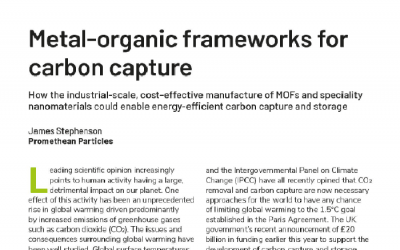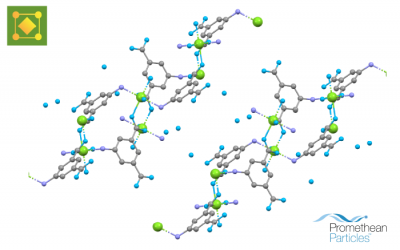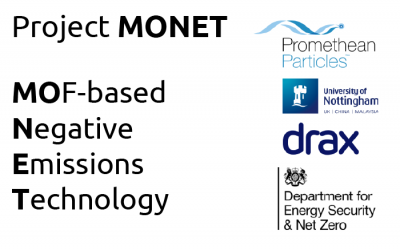MOFs
Metal-organic
Frameworks
A new class of incredible materials – available at industrial scale
Metal-organic frameworks (MOFs) were discovered in 1965 as waste material from other chemical processes. In the late 1990s, the first permanently porous MOF was discovered and the term “metal-organic framework” was coined. More than 90,000 MOFs have so far been created, with researchers and product developers drawn to their exciting chemical and structural properties, including uniform pore structures, tuneable porosity and flexibility in network topology, geometry, dimension and chemical functionality.
5 Key Attributes of MOFs
Incredibly high surface areas
MOFs are either two-or three-dimensional lattices, with surface areas continuing throughout the material. Surface areas of up to 7,000 m2/gram have been measured that are 10-100 times than those of other high-surface-area materials. A single thumbnail-sized pellet of one of our MOFs has the same su rface area as two tennis courts!
High thermal and chemical stabilities
In many applications, thermal cycling of the adsorbent is required to regenerate it once saturated. MOFs can be engineered to excel when repeatedly used in both heating and cooling cycles. Careful selection of the metal and ligands can allow high chemical robustness and thermal degradation points many times higher than any realistic regeneration temperature.
Tuneable selectivity
MOFs offer nearly infinite metal and ligand combinations, which allows extreme tuneability when compared to zeolites, activated carbons and similar high-surface-area materials.
Low energy of desorption
As solution-based systems, MOFs regenerate easily due to their low energy of desorption–that is, the energy required to release an adsorbed substance from their surface. MOFs can be engineered to tune the energy of desorption to desired ranges for both optimal affinity and selectivity of adsorbents.
Inherent recyclability
During repeated use, the MOF crystal structure may be damaged, but the metals and organic linkers that make up the lattice remain virtually intact. Dissolving the crystal can allow these “building blocks” to be recovered, so fresh MOFs can be generated using recycled precursors. MOFs can thus be a key part in solutions that advance a circular economy.
Metal-organic Frameworks
What are MOFs?
MOFs are organic-inorganic crystalline structures consisting of metal ions and organic linker molecules (ligands). They have extremely high porosity and surface area, up to 7,000 m2/g – or, put another way, the surface area of one gram of metal-organic framework would cover an entire football field!
The nearly limitless choice of metals and linkers allows incredible tuneability of pore shape and size. The cage- like structure contributes to the high surface area of MOFs, just one of their many advantageous properties. This structure can act like a sieve to selectively trap or adsorb certain chemical species.
We are seeing significant commercial interest in MOFs for gas storage and separation, purification, electrochemical energy storage and sensing. Our continuous hydrothermal synthesis route of manufacture lends itself well to the commercial production of MOFs, which have historically been very expensive. We also work with many research institutions on the development of new MOFs, as well as the translation of batch to continuous manufacturing methods.


MOF structures demonstrated in continuous flow
Other MOFs not described here are also available. Please contact us to discuss an specific requirements you may have.
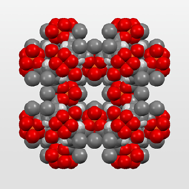
HKUST-1
(Cu-BTC)
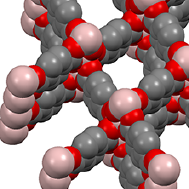
MIL-53 (Al)
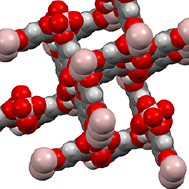
Aluminium
Fumarate
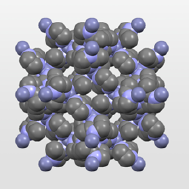
ZIF-8
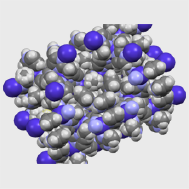
ZIF-67
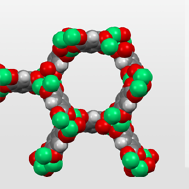
CPO-27 (Ni)/
MOF-74 (Ni)
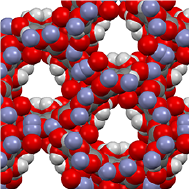
CPO-27 (Zn)/
MOF-74 (Zn)
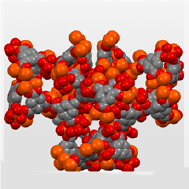
MIL-100 (Fe)
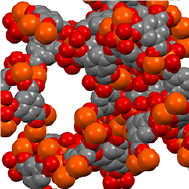
Fe-BTC
Temperature-swing Carbon Capture using
Metal-organic Frameworks
Temperature swing is just one method that can be used for solid sorbents systems. Independent beds of MOF are alternatively heated and cooled to establish the appropriate conditions for either capture or regeneration. Click the link to see a graphical illustration of how a temperature-swing adsorption process can employ MOFs for energy-efficient carbon capture.
Temperature-swing Carbon Capture using MOFs

Temperature-swing Carbon Capture using MOFs
Temperature-swing Carbon Capture using
Metal-organic Frameworks
Temperature swing is just one method that can be used for solid sorbents systems. Independent beds of MOF are alternatively heated and cooled to establish the appropriate conditions for either capture or regeneration. Click the link to see a graphical illustration of how a temperature-swing adsorption process can employ MOFs for energy-efficient carbon capture.

MOFs NEWS
Promethean Particles MOF-based Carbon Capture Featured in Decarbonisation Technology
Our CEO, James Stephenson, wrote an opinion piece for Decarbonisation Technology discussing “Metal-organic frameworks...
Promethean Particles and Captivate Announce New MOF Scale-up Collaboration
We are excited to announce a new collaboration with Captivate Technology (“Captivate”) to scale-up the production of a...
Promethean Particles’ Awarded DESNZ Funding for MOF-based Carbon Capture
Promethean Particles (“Promethean” or the “Company”) is pleased to announce that it has been awarded a £445,848 grant...
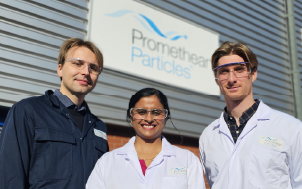
Ready to discuss how Promethean Particles can help you with your next MOF-based challenge? Contact us to learn more.

